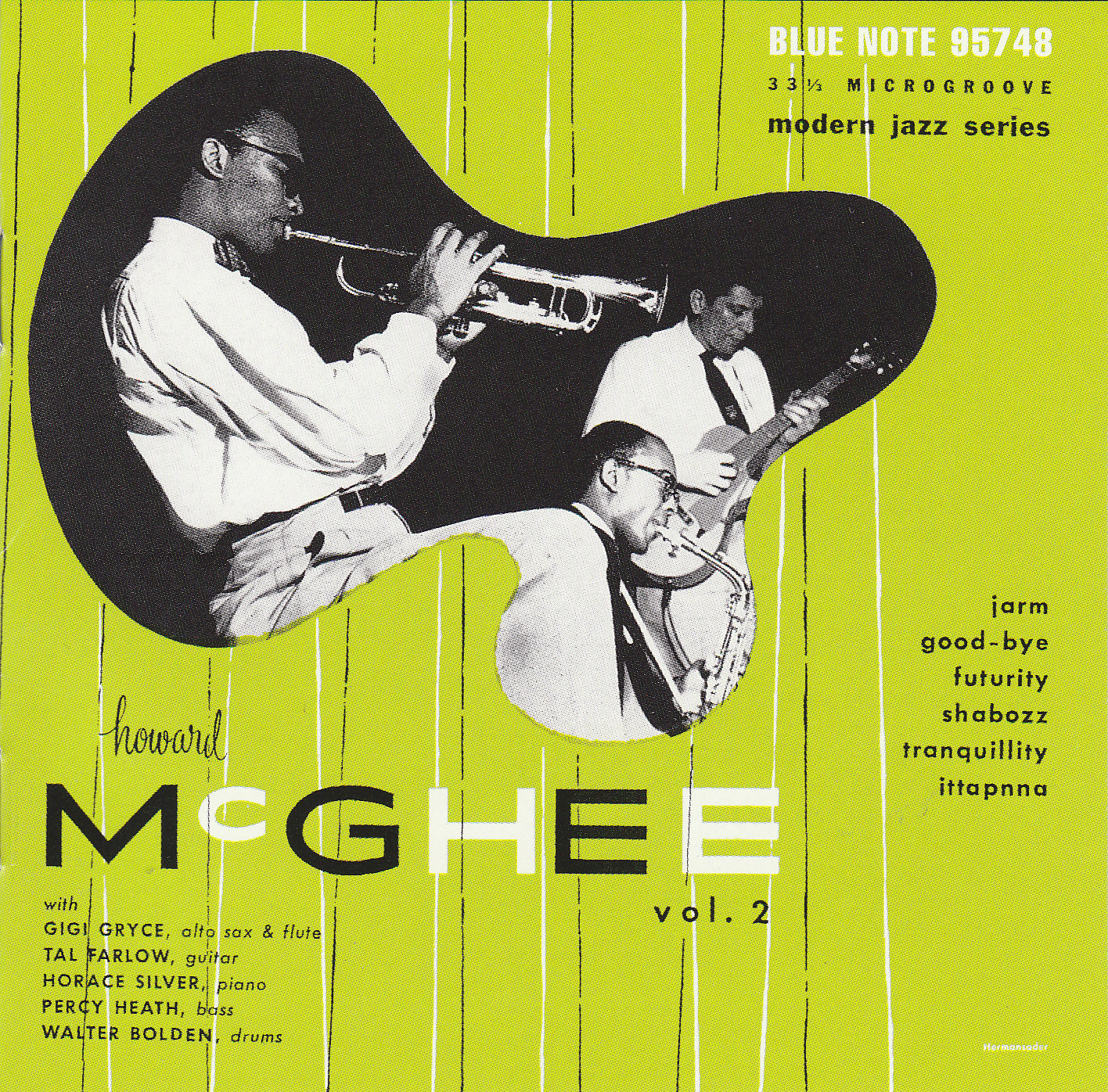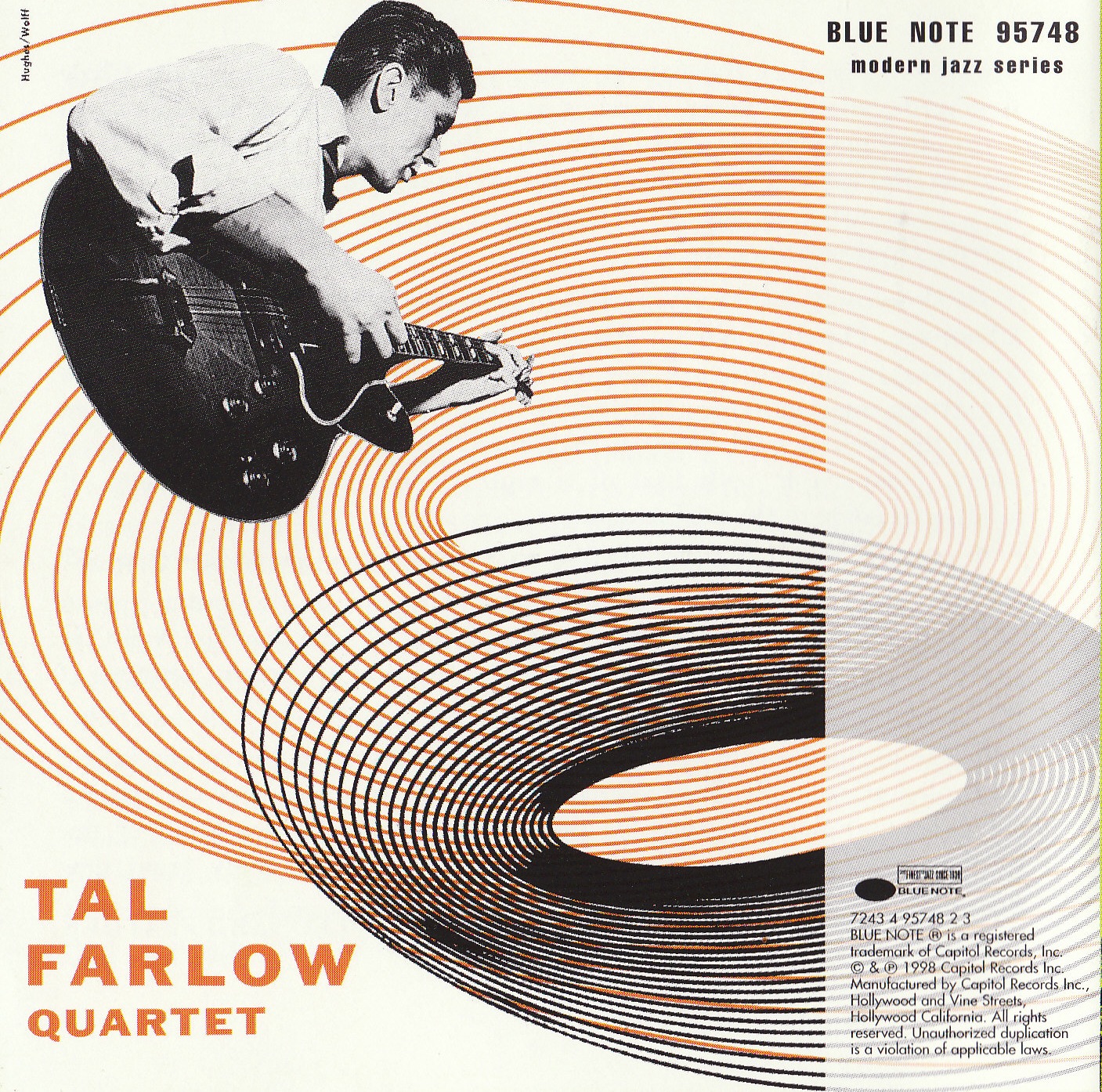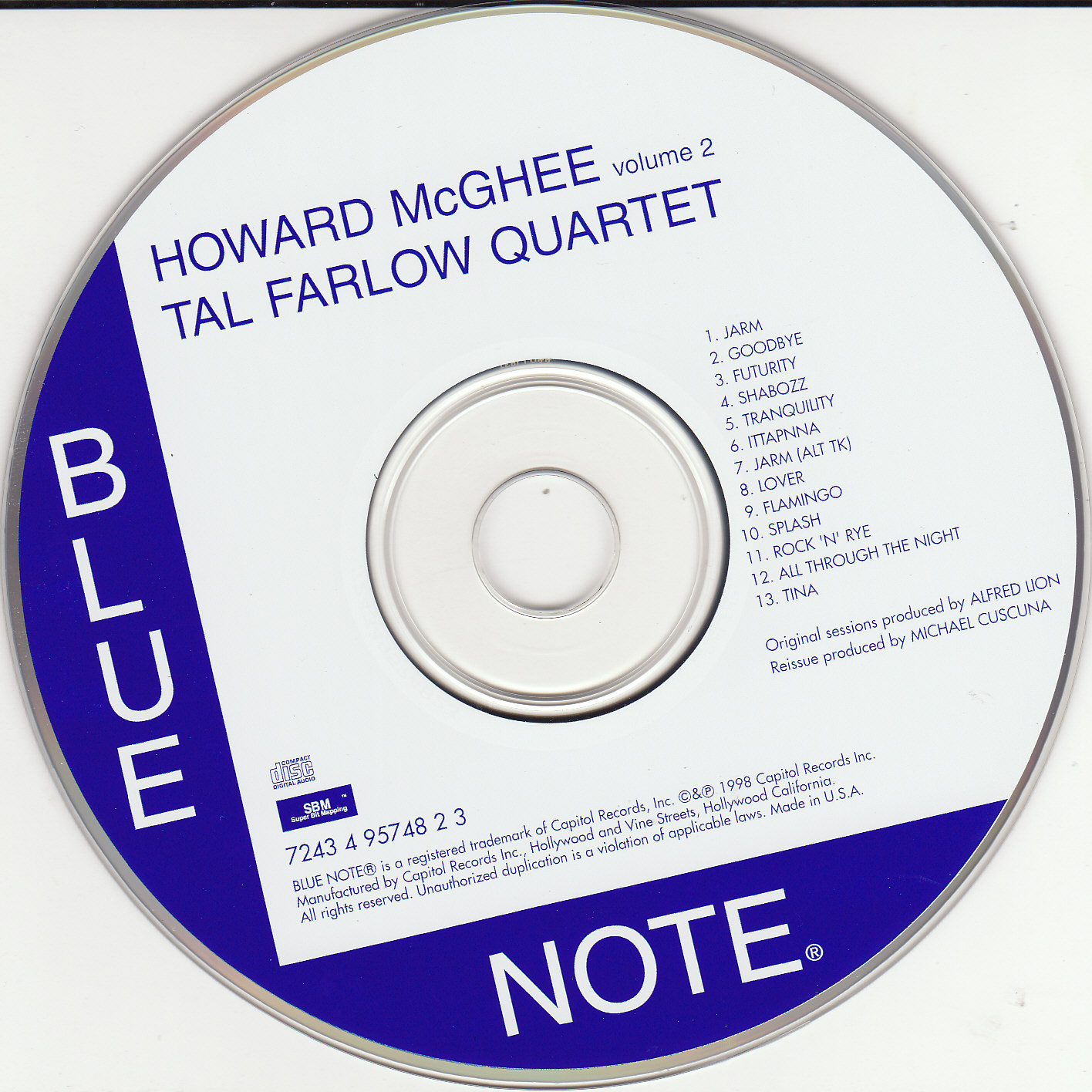



BOOKLET
Howard McGhee – Vol. 2
01. Jarm
02. Goodbye
03. Futurity
04. Shabozz
05. Tranquillity
06. Ittapnna
07. Jarm (Alternate Take)
Gigi Gryce – alto sax, flute
Howard McGhee – trumpet
Tal Farlow – guitar
Horace Silver – piano
Percy Heath – bass
Walter Bolden – drums
Recorded: May 20, 1953 NYC
Tal Farlow Quartet
08. Lover
09. Flamingo
10. Splash
11. Rock ‘N’ Rye
12. All Through The Night
13. Tina
Tal Farlow – guitar
Don Arnone – guitar
Clyde Lombardi – bass
Joe Morello – drums
Recorded: April 11, 1954 Hackensack, NJ
AMG Biography of Howard McGhee by Scott Yanow
During 1945-1949, Howard McGhee was one of the finest trumpeters in jazz, an exciting performer with a sound of his own, who among the young bop players, ranked at the top with Dizzy Gillespie and Fats Navarro. The “missing link” between Roy Eldridge and Fats Navarro (Navarro influenced Clifford Brown who influenced most of the post-1955 trumpeters), McGhee originally played clarinet and tenor, not taking up trumpet until he was 17. He worked in territory bands, was with Lionel Hampton in 1941, and then joined Andy Kirk (1941-1942), being featured on “McGhee Special.” McGhee participated in the fabled bop sessions at Minton’s Playhouse and Monroe’s Uptown House, modernizing his style away from Roy Eldridge and towards Dizzy Gillespie. He was with Charlie Barnet (1942-1943), returned to Kirk (where he sat next to Fats Navarro in the trumpet section), and had brief stints with Georgie Auld and Count Basie before traveling to California with Coleman Hawkins in 1945; their concise recordings of swing-to-bop transitional music (including “Stuffy,” “Rifftide,” and “Hollywood Stampede”) are classic. McGhee stayed in California into 1947, playing with Jazz at the Philharmonic, recording and gigging with Charlie Parker (including the ill-fated “Lover Man” date) and having an influence on young players out on the Coast. His Dial sessions were among the most exciting recordings of his career, and back in New York he recorded for Savoy and had a historic meeting on record with Navarro in 1948 on Blue Note.
Eventually, drugs began to affect McGhee’s career. He traveled on a USO tour during the Korean War, recording in Guam. McGhee also had sessions for Bethlehem (1955-1956) but was inactive during much of the ’50s. He recorded some strong dates for Felsted, Bethlehem, Contemporary, and Black Lion during 1960-1961, and on a quartet outing for United Artists (1962), but (with the exception of a Hep big band date in 1966) was largely off records again until 1976. He had a final burst of activity during 1976-1979 for Sonet, SteepleChase, Jazzcraft, Zim, and Storyville, but by then, McGhee was largely forgotten and few knew about his link to Fats Navarro and Clifford Brown.
AMG Biography by Scott Yanow
Nearly as famous for his reluctance to play as for his outstanding abilities, guitarist Tal Farlow did not take up the instrument until he was already 21, but within a year was playing professionally and in 1948 was with Marjorie Hyams’ band. While with the Red Norvo Trio (which originally included Charles Mingus) from 1949-1953, Farlow became famous in the jazz world. His huge hands and ability to play rapid yet light lines made him one of the top guitarists of the era. After six months with Artie Shaw’s Gramercy Five in 1953, Farlow put together his own group, which for a time included pianist Eddie Costa. Late in 1958, Farlow settled on the East Coast, became a sign painter, and just played locally. He only made one record as a leader during 1960-1975, but emerged a bit more often during 1976-1984, recording for Concord fairly regularly before largely disappearing again. Profiled in the definitive documentary Talmage Farlow, the guitarist can be heard on his own records for Blue Note (1954), Verve, Prestige (1969), and Concord. He died of cancer July 25, 1998, at age 77.
AMG Review by Scott Yanow
Among the rarest Blue Note recordings are the ones issued in the early ’50s on 10″ LPs, a format that did not catch on (being quickly overshadowed by 12″ LPs). Among the two albums that fell into the cracks were sessions by Howard McGhee (another CD has his initial Blue Note date) and Tal Farlow. This 1998 CD contains all of the music from two former albums. McGhee’s half matches the trumpeter with altoist Gigi Gryce (doubling quite effectively on flute), guitarist Farlow, pianist Horace Silver, bassist Percy Heath, and drummer Walter Bolden. While that bop-oriented band plays originals by McGhee, Gryce, and Bolden (none of which caught on) plus the standard “Goodbye,” and is joined by a new alternate take, the main reason to acquire this CD is for the Tal Farlow session. He is joined by second guitarist Don Arnone, bassist Clyde Lombardi, and drummer Joe Morello for three standards (“Lover,” “Flamingo” and “All Through the Night”) plus a trio of the leader’s originals during what was Farlow’s first recording as a leader. Even at that early stage, Tal Farlow was a giant.
